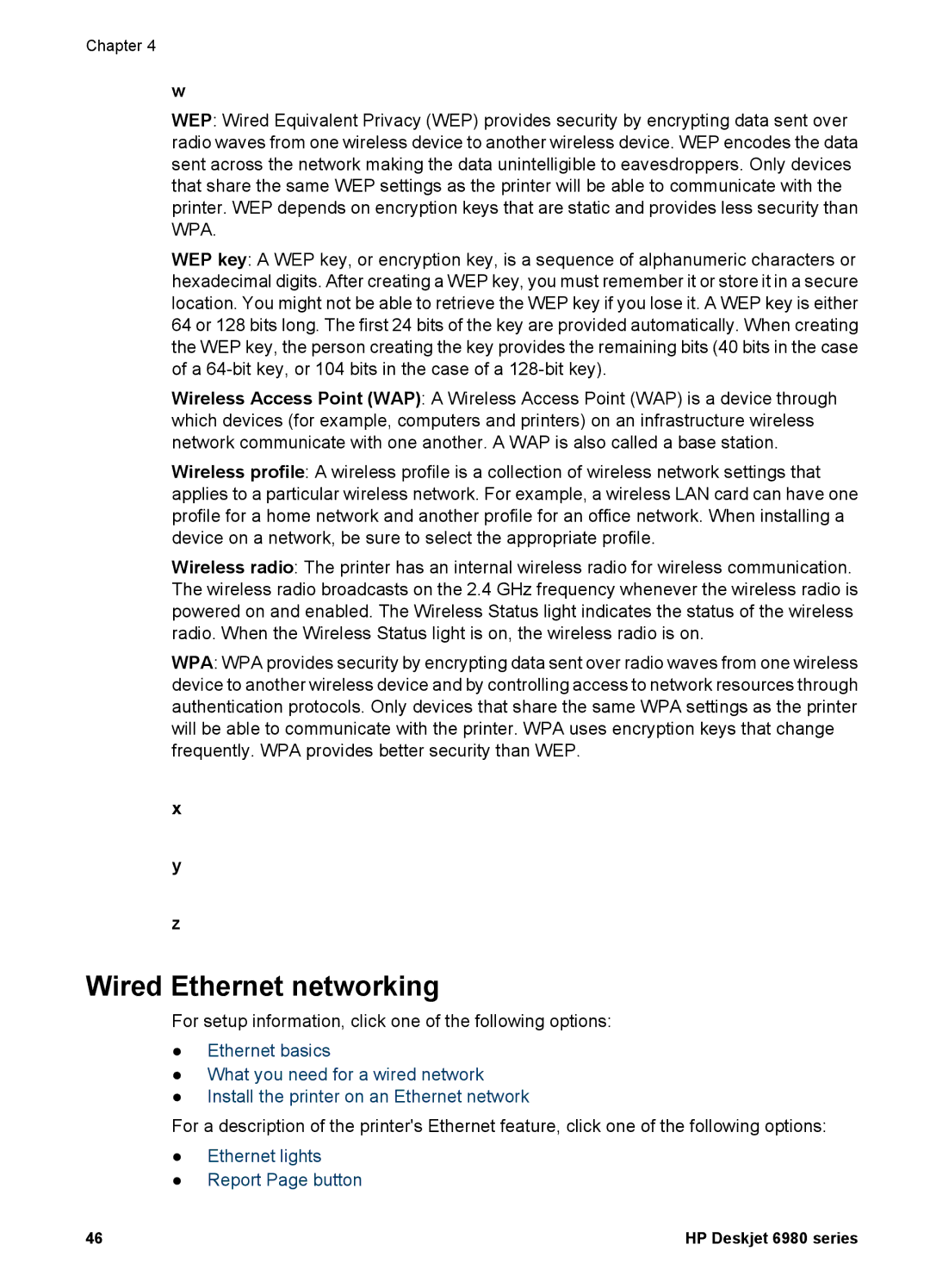Chapter 4
w
WEP: Wired Equivalent Privacy (WEP) provides security by encrypting data sent over radio waves from one wireless device to another wireless device. WEP encodes the data sent across the network making the data unintelligible to eavesdroppers. Only devices that share the same WEP settings as the printer will be able to communicate with the printer. WEP depends on encryption keys that are static and provides less security than WPA.
WEP key: A WEP key, or encryption key, is a sequence of alphanumeric characters or hexadecimal digits. After creating a WEP key, you must remember it or store it in a secure location. You might not be able to retrieve the WEP key if you lose it. A WEP key is either 64 or 128 bits long. The first 24 bits of the key are provided automatically. When creating the WEP key, the person creating the key provides the remaining bits (40 bits in the case of a
Wireless Access Point (WAP): A Wireless Access Point (WAP) is a device through which devices (for example, computers and printers) on an infrastructure wireless network communicate with one another. A WAP is also called a base station.
Wireless profile: A wireless profile is a collection of wireless network settings that applies to a particular wireless network. For example, a wireless LAN card can have one profile for a home network and another profile for an office network. When installing a device on a network, be sure to select the appropriate profile.
Wireless radio: The printer has an internal wireless radio for wireless communication. The wireless radio broadcasts on the 2.4 GHz frequency whenever the wireless radio is powered on and enabled. The Wireless Status light indicates the status of the wireless radio. When the Wireless Status light is on, the wireless radio is on.
WPA: WPA provides security by encrypting data sent over radio waves from one wireless device to another wireless device and by controlling access to network resources through authentication protocols. Only devices that share the same WPA settings as the printer will be able to communicate with the printer. WPA uses encryption keys that change frequently. WPA provides better security than WEP.
x
y
z
Wired Ethernet networking
For setup information, click one of the following options:
●Ethernet basics
●What you need for a wired network
●Install the printer on an Ethernet network
For a description of the printer's Ethernet feature, click one of the following options:
●Ethernet lights
●Report Page button
46 | HP Deskjet 6980 series |
